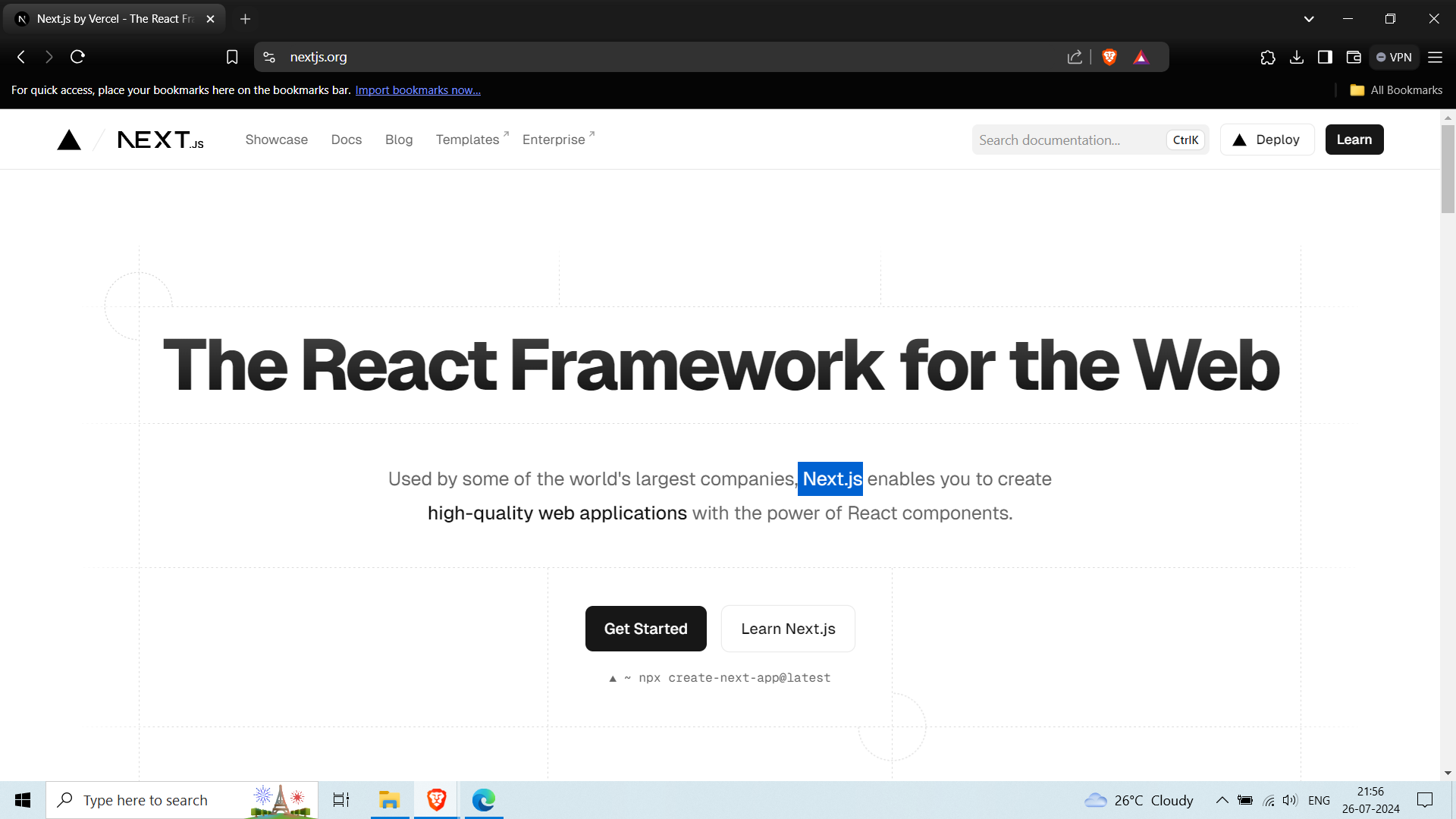Top 10 Best Features of Next.js
 Rohan Shrivastava
Rohan Shrivastava
Next.js has emerged as a powerful framework for building React applications, offering a wide range of features that simplify development and enhance performance.
Here are the top 10 best features of Next.js:
1. Automatic Static Optimization
One of the standout features of Next.js is its ability to automatically optimize your application for static generation.
By analyzing your pages and determining if they can be statically generated, Next.js significantly improves loading times and overall performance.
This feature allows developers to create fast, SEO-friendly websites without additional configuration.
2. Hybrid Static & Server Rendering
Next.js provides a unique approach by combining the benefits of both static site generation (SSG) and server-side rendering (SSR).
This hybrid model allows you to choose the rendering method that best suits each page.
You can statically generate pages that don’t change often while leveraging server rendering for dynamic content, providing flexibility and performance optimization.
3. File-Based Routing
Routing in Next.js is simple and intuitive, thanks to its file-based routing system.
By placing files in the
pagesdirectory, you automatically create corresponding routes.This eliminates the need for complex configuration, making it easy to manage and scale your application’s routing structure.
4. API Routes
Next.js allows you to create API endpoints within your application using the same file-based routing system.
By placing files in the
pages/apidirectory, you can build serverless functions that handle API requests.This feature is particularly useful for building full-stack applications, as it integrates seamlessly with your front-end code.
5. Built-In CSS and Sass Support
Styling in Next.js is straightforward, with built-in support for CSS and Sass.
You can import CSS files directly into your components, enabling scoped styles without additional configuration.
For more complex styling needs, Next.js also supports CSS modules, allowing you to define local styles that won’t clash with other parts of your application.
6. Image Optimization
Next.js includes an optimized image component that automatically resizes and serves images in the most efficient format.
This feature significantly reduces load times and improves the user experience, particularly on mobile devices.
By specifying the dimensions and layout of your images, you can ensure they are displayed correctly across different screen sizes.
7. Fast Refresh
Developing with Next.js is a smooth experience, thanks to its fast refresh feature.
Changes to your code are instantly reflected in the browser without losing the component state.
This real-time feedback loop allows for quicker debugging and development, making the process more efficient and enjoyable.
8. TypeScript Support
Next.js has excellent TypeScript support out of the box.
By simply adding a
tsconfig.jsonfile to your project, you can start using TypeScript to catch errors early and improve the overall quality of your code.The seamless integration ensures you can leverage TypeScript’s powerful type-checking capabilities without extensive configuration.
9. Internationalization (i18n)
For applications targeting a global audience, Next.js offers built-in internationalization (i18n) support.
You can easily define locales and configure your application to handle multiple languages.
This feature simplifies the process of building multilingual websites, ensuring your content is accessible to users worldwide.
10. Extensible with Plugins and Middleware
Next.js is highly extensible, allowing you to customize its behavior with plugins and middleware.
Whether you need to add custom headers, implement authentication, or integrate third-party services, Next.js provides a flexible architecture that can be tailored to your specific needs.
This extensibility makes it possible to build complex, feature-rich applications with ease.
Conclusion
Next.js is a powerful and versatile framework that simplifies the process of building React applications.
Its features, such as automatic static optimization, hybrid rendering, and file-based routing, enhance performance and developer experience.
Whether you are building a simple website or a complex web application, Next.js provides the tools and flexibility needed to create high-quality, performant applications.
Subscribe to my newsletter
Read articles from Rohan Shrivastava directly inside your inbox. Subscribe to the newsletter, and don't miss out.
Written by

Rohan Shrivastava
Rohan Shrivastava
Hi, I'm Rohan, a B.Tech graduate in Computer Science (Batch 2022) with expertise in web development (HTML, CSS, JavaScript, Bootstrap, PHP, XAMPP). My journey expanded with certifications and intensive training at Infosys, covering DBMS, Java, SQL, Ansible, and networking. I've successfully delivered projects, including a dynamic e-commerce site and an Inventory Management System using Java. My proactive approach is reflected in certifications and contributions to open-source projects on GitHub. Recognized for excellence at Infosys, I bring a blend of technical proficiency and adaptability. Eager to leverage my skills and contribute to innovative projects, I'm excited about exploring new opportunities for hands-on experiences. Let's connect and explore how my skills align with your organization's goals.